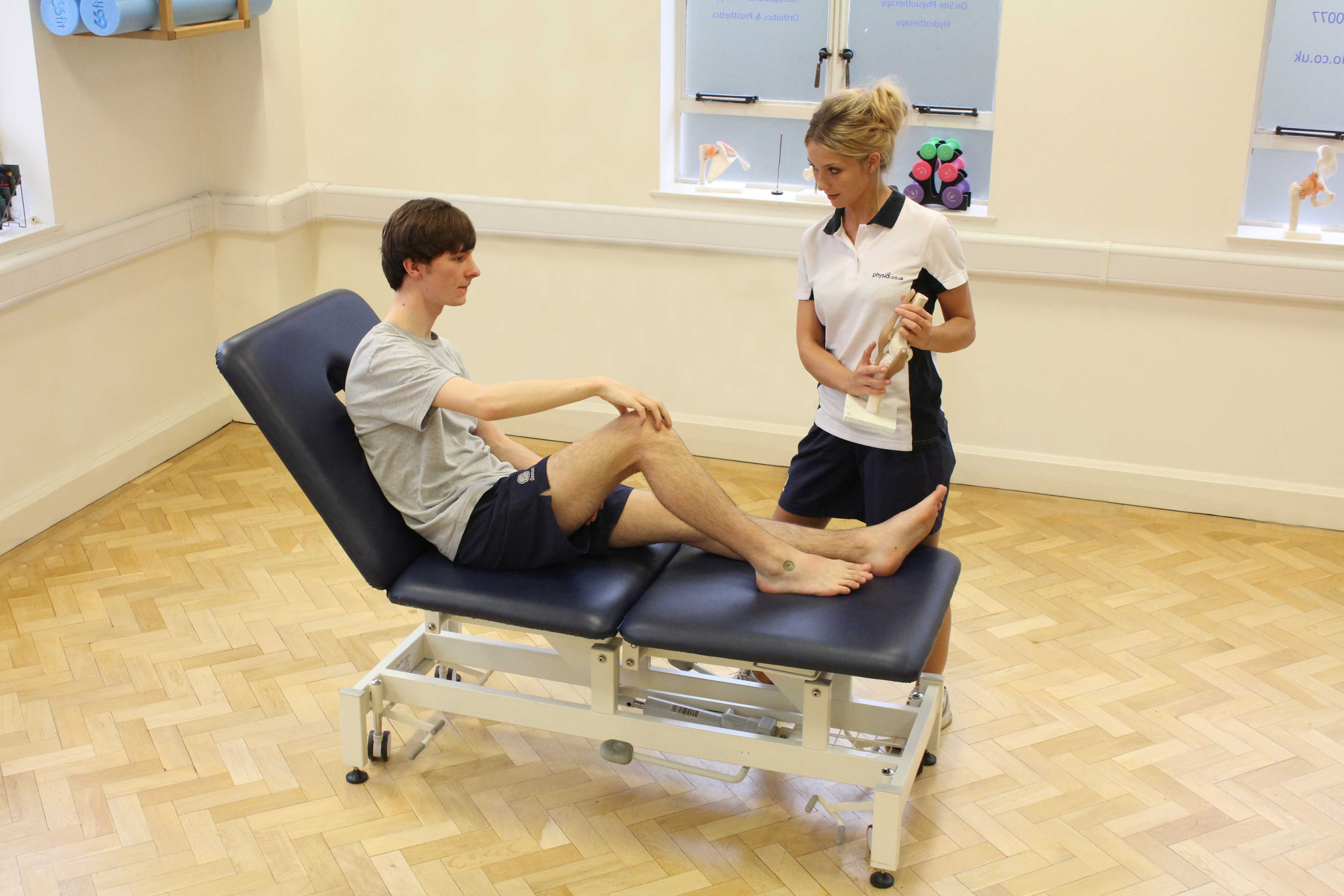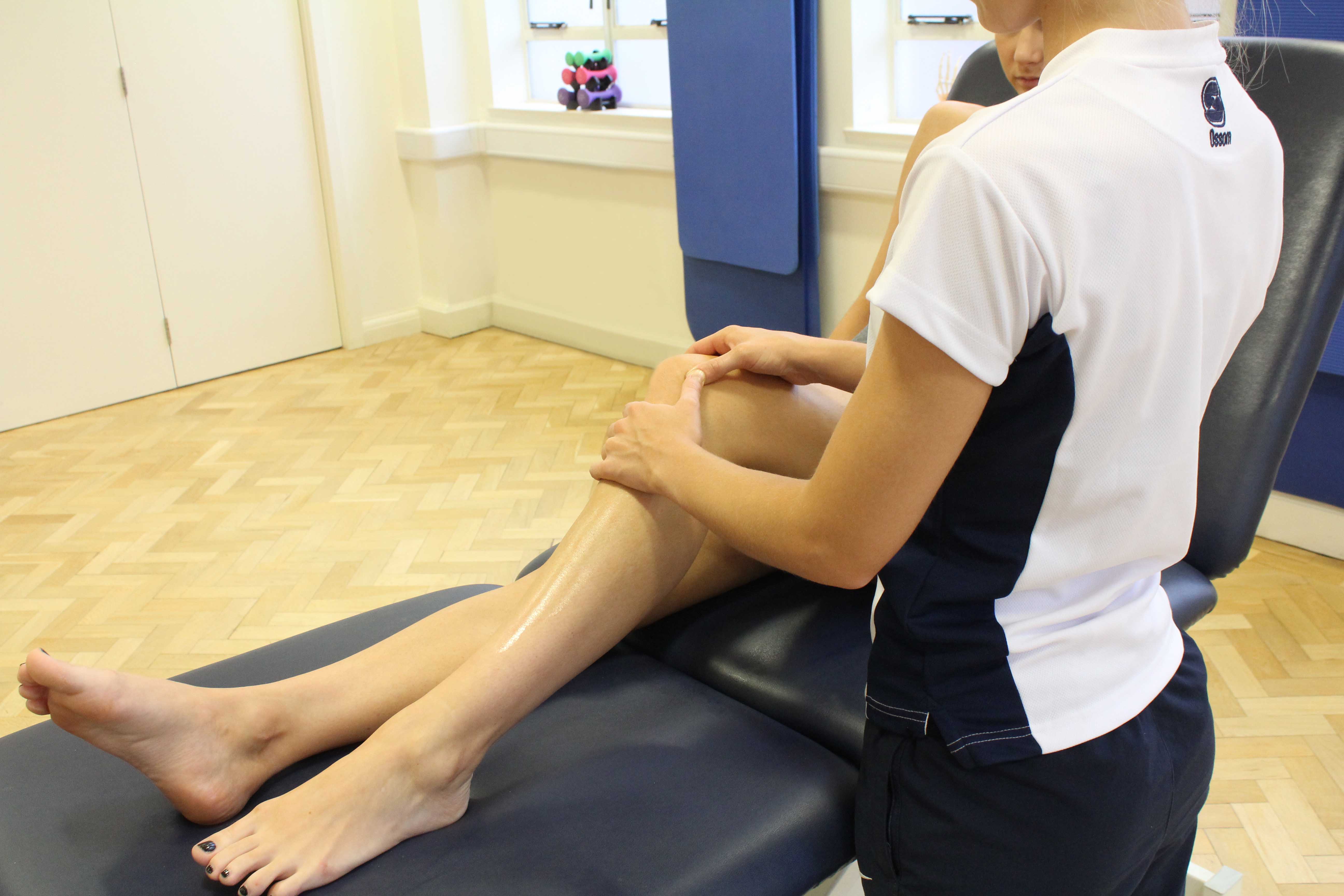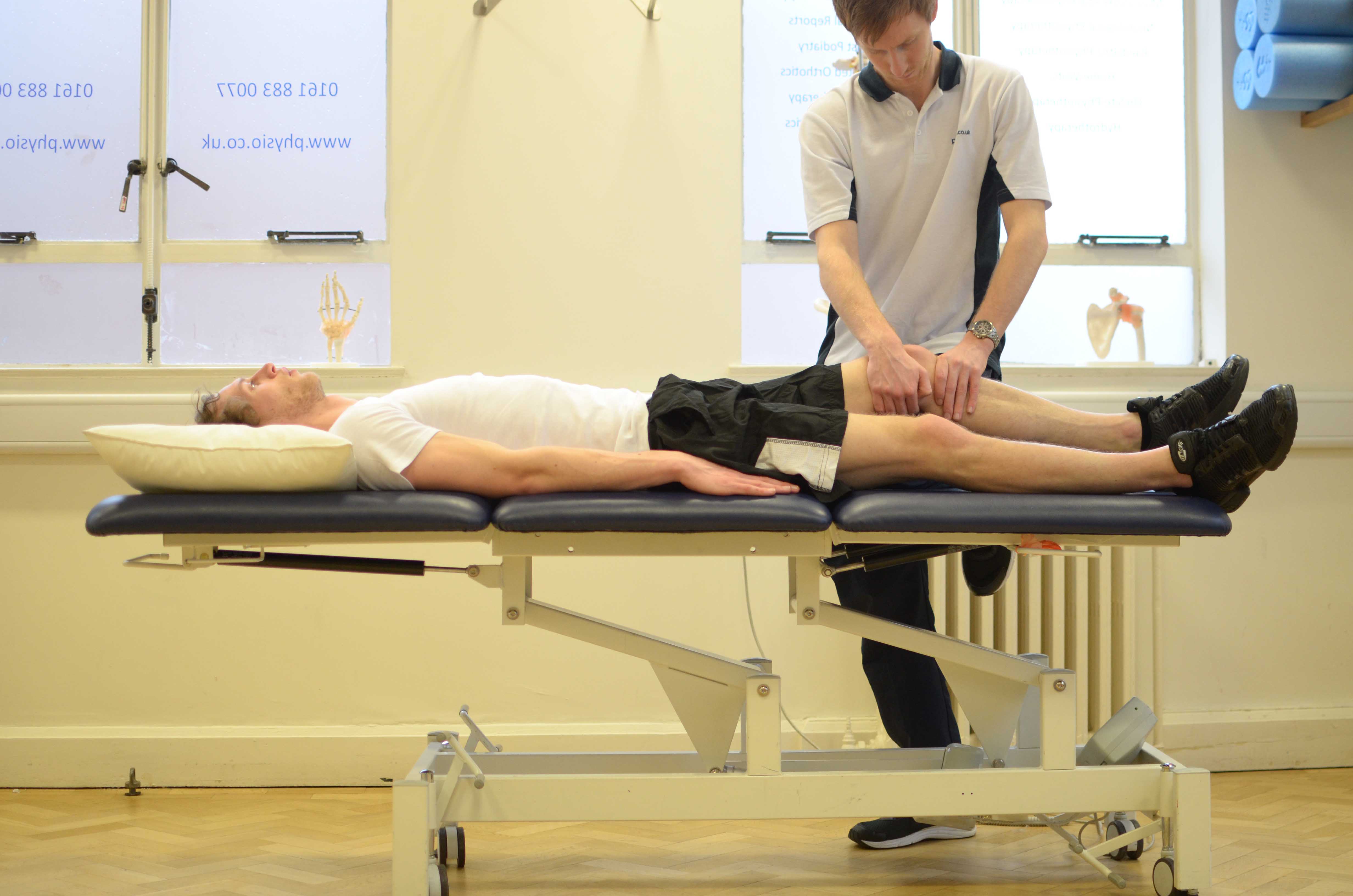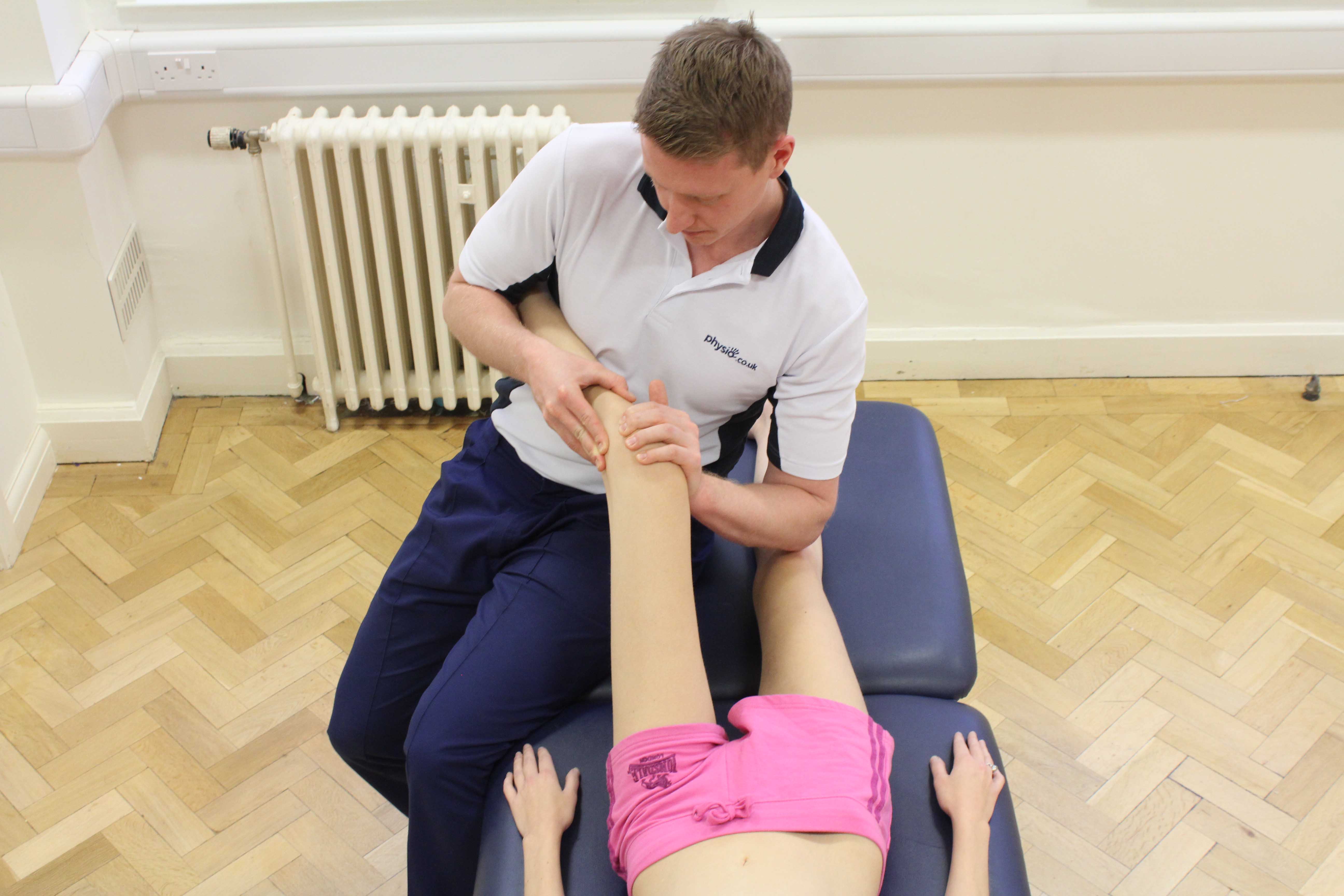Lateral patella tilt is when the knee cap is not sitting properly in the groove at the bottom of the thigh bone (femoral groove) and is tilted towards the outside (lateral) of the knee.
Lateral riding patella means that instead of sitting directly in the groove of the thigh bone (femoral groove), the entire patella has moved towards the outside of the knee.
With both lateral tilt and lateral riding patella, the knee cap does not glide efficiently over the femoral groove which causes patella maltracking. The main cause for patella maltracking is weakening of the quadriceps muscle and tissues on the inner side of the knee combined with the tightening of quadriceps muscles and tissues on the outer side of the knee that hold the patella in place. This results in the patella being pulled to one side and out of the femoral grove. Maltracking of the patella causes a significant amount of pain, stiffness and irritation at the front of the knee joint during movement.
Lateral release surgery is required for patients with excessive patellar maltracking. A lateral release procedure is performed arthroscopically (key hole) and involves the surgeon cutting through the tight retinaculum (connective tissue) which is pulling the patella out of position in order to release the tension in the tissue. This allows the patella to sit properly within its groove. Once the release has been completed, the surgeon will close the small incisions with sutures (stitches) or staples and a small pad with an elastic bandage may be placed on the outside of the knee following the surgery to help keep the patella from returning to its lateral position.
Lateral release surgery is necessary to realign the patella if it has become out of place which results in maltracking of the patellar during movement. Lateral release surgery is essential and will help alleviate symptoms such as pain, irritation and stiffness that occur as a result of patella maltracking.
Physiotherapy after lateral release surgery is crucial to ensure the success of the surgery, to prevent the likelihood of any problems occurring in the future and to guarantee the return of full and painless function in the knee joint.
 Above: Therapist educating client about their knee condition
Above: Therapist educating client about their knee conditionPhysiotherapy before lateral release surgery
Before you undergo lateral release surgery it is important to take part in a physiotherapy programme with Physio.co.uk in order to better prepare your knee for the operation and to ensure a successful recovery once you have had your lateral release surgery. Your physiotherapy programme with Physio.co.uk prior to your lateral release surgery will aim to strengthen the muscles in and around your knee. More specifically, your physiotherapy programme will focus on strengthening the weak muscles on the inner side of your knee (vastus medialis oblique or VMO) and loosening the muscles and tissues on the outer side of your knee (vastus lateralis). Physiotherapy before your surgery will also include range of movement exercises and cardiovascular activities to maintain or improve your fitness for the surgery.
 Above: Patella mobilisations performed by MSK Physiotherapist
Above: Patella mobilisations performed by MSK PhysiotherapistSymptoms after lateral release surgery
Once you have undergone lateral release surgery you will experience pain, stiffness, swelling and limited range of movement in your knee. You will have a bandage and pad placed on the outer side of your knee to attempt to hold the patella in its correct position and prevent it returning to the outer side of the knee. Your knee will be immobilised using a knee brace and you will be given elbow crutches so you can partially weight bear for as long as it is necessary. You will be unable to drive until you have painless, full range of movement in your knee joint.
 Above: Mobilisations of the knee joint by a MSK therapist
Above: Mobilisations of the knee joint by a MSK therapistPhysiotherapy after lateral release surgery
Physiotherapy after your lateral release surgery is imperative to ensure the success of the surgery. A comprehensive physiotherapy programme with Physio.co.uk will help prevent further problems with your knee in the future and guarantee the return of full or near to full function in your knee. To safely and most efficiently return to normal or high level functional activity you will require adequate strength, flexibility and endurance in your knee. After lateral release surgery your rehabilitation may take from 3 to 6 months for a successful and full recovery. It is important not to return to high level activities too soon following your lateral release surgery as this will increase the risk of repeat problems and possible injury.
 Above: Mobilisations of the knee joint by a MSK therapist
Above: Mobilisations of the knee joint by a MSK therapist0-2 weeks
During the early stages of your recovery, the goals of your rehabilitation with Physio.co.uk will focus on controlling any pain and swelling that you will be experiencing. Additionally, at this stage you will be using elbow crutches and be partially weight bearing therefore your physiotherapy will aim to progress your weight bearing ability as much as possible by concentrating on partial weight bearing exercises. Physio.co.uk will also aim to maintain the strength of your leg muscles. At this stage physiotherapy will also increase the flexibility in the muscles in and around your knee, increasing your range of movement. Your physiotherapy will include:
- Cryotherapy (ice)
- Compression and elevation
- Pain modalities
- Passive (assisted) range of movement exercises
- Gentle patella mobilisations
- Strengthening exercises for VMO (vastus medialis oblique located on inner side of knee)
- Strengthening exercises for hamstring, hip flexors and calf muscles
- Stretching exercises for all lower limb muscles
- Weight bearing exercises as tolerated
- Weight shifting and balance exercises (use of crutches)
2-6 weeks
After 2 weeks your physiotherapy programme with Physio.co.uk will continue to focus on reducing any pain and swelling you will be experiencing. Your physiotherapy will also aim to increase strength and endurance in the muscles in your lower extremity paying particular attention to strengthening your VMO muscle (vastus medialis oblique). Physio.co.uk will also aim to progress you weight bearing to fully wearing as soon as it is tolerated by you and improve the range of motion in your knee. Once fully weight bearing you physiotherapy will then gear towards gait re-education and regaining good proprioception (balance). Your physiotherapy will include:
- Cryotherapy (ice)
- Compression (knee brace)
- Patella mobilisations
- Passive and active range of movement exercises
- Strengthening exercises for quadriceps, hamstrings and calf muscles
- Strengthening exercises for muscles in hip, ankle and opposite limb
- Stretching and flexibility exercises for lower extremity
- Weight bearing activities as tolerated
- Gait re-education
- Proprioception (balance) training
- Hydrotherapy
6-12 weeks
After 6 weeks of successful physiotherapy with Physio.co.uk you will now be fully weight bearing and should have full and painless range of movement in your knee. Your physiotherapy will now focus on the continuation of strengthening exercises for the muscles in and around your affected knee as well as your hip, ankle and opposite leg for further support. Additionally activities will continue to include range of movement exercises, muscle control, gait re-education and proprioception training. Your physiotherapy will continue to focus on specific exercises that aim to strengthen you VMO and stretch the muscles and tissues on the outer part of your knee to prevent any repeat problems that involves the lateral movement of the patella. After 6 weeks your physiotherapy programme with Physio.co.uk will also begin to focus more on your cardiovascular fitness and muscle endurance. Your physiotherapy will include:
- Continuation of strengthening exercises from previous weeks
- Continuation of stretching exercises from previous weeks
- Patella mobilisations
- Active range of movement exercises
- Gait re-education
- Proprioception (balance) training
- Static bicycle (resistance as tolerated)
- Hydrotherapy
- Walking
3 months onwards
Three months after your lateral release surgery and undergoing successful physiotherapy with Physio.co.uk you will have seen significant improvements in strength of the muscles in and around your knee, improved range of movement and flexibility as well as increased cardiovascular fitness. You should by now be feeling no pain during movement in your knee and your physiotherapy will now continue to focus on preventing further problems that involve any lateral movement of the patella. Your physiotherapy will continue to focus on improving your cardiovascular fitness and muscle endurance whilst also gearing towards more sport or hobby specific activities.
Full recovery after lateral release surgery may take up to 6 months. The success and rate of your recovery highly depend on your commitment and adherence to your comprehensive physiotherapy programme with Physio.co.uk as well as the condition of your knee prior to your lateral release surgery.
Summary
Lateral release is a surgical procedure to release tight capsular structures (lateral retinaculum) on the outer aspect (lateral aspect) of the kneecap. This is usually performed because of knee pain related to the kneecap (patella) being pulled over to the outer (lateral) side and not being able to run properly in the centre of the groove at the bottom end the thigh bone (femur) as the knee bends and straightens. Lateral release surgery is crucial to correct the alignment of the patella and therefore eliminate the symptoms caused by patella maltracking such as pain, irritation and stiffness. Physiotherapy with Physio.co.uk after lateral release surgery is essential to ensure the success of the surgery, prevent any further problems occurring in the future and to guarantee the return of full and painless function in the knee. Physio.co.uk will make sure that you get back to whatever it is you love doing as soon as possible after your lateral release surgery. Call Physio.co.uk now on 0330 088 7800 for more information or contact us to book an appointment.

 0330 088 7800
0330 088 7800





































